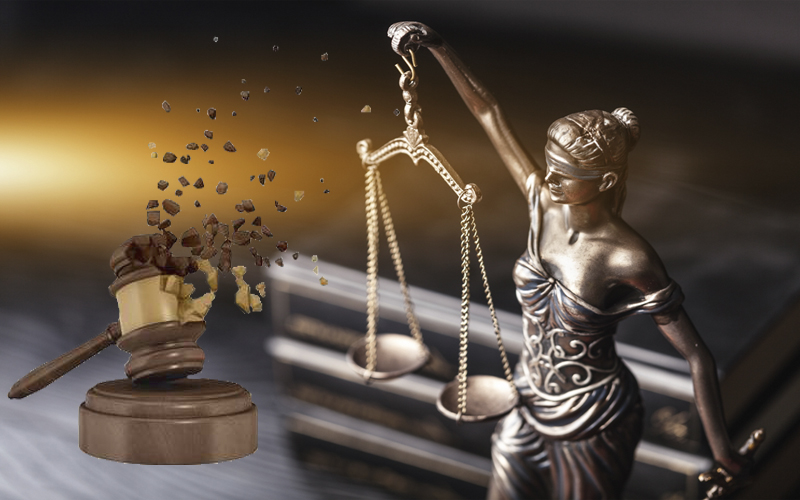Judicial branch of government
“…the judiciary is the guarantee of our freedom and our property in accordance with the Constitution”
Charles Evans Hughes, Chief Justice of the United States, 1907 speech in Elmira, New York.
The third branch of the federal government, the judiciary, consists of a system of courts covering the entire territory of the country. At the head of this system is the Supreme Court of the United States.
The state court system existed even before the drafting of the Constitution. There was considerable disagreement among the delegates to the Constitutional Convention on the need for a system of federal courts, and on the question of whether this system should supplant state courts.
Like other issues under discussion, the delegates reached a compromise here that the state courts retained their jurisdiction, but the Constitution gave the federal judiciary limited power.
Article III of the Constitution defines the following basis of the federal court system: “The judicial power of the United States shall be vested in one Supreme Court and such inferior courts as Congress may from time to time approve.”
Federal court system
In accordance with the above provision, the First Congress divided the country into districts and established federal courts for each district. Out of this endeavor came the current structure: the Supreme Court, 13 appellate courts, 94 federal district courts, and two special jurisdiction courts.

Congress currently retains its power to create and abolish federal courts and determine the number of judges in the federal judiciary. However, he does not have the right to liquidate the Supreme Court.
Judicial power extends to cases arising under the current Constitution, laws of Congress, and international treaties of the United States; cases concerning ambassadors, other officials and consuls of foreign countries in the United States; disputes to which the US government is a party; disputes between states (or their citizens) and foreign countries (or their citizens or subjects) and bankruptcy cases.
The Eleventh Amendment removed from federal jurisdiction cases in which citizens of one state act as plaintiffs and the government of another state as a defendant. This has not prevented the extension of federal jurisdiction to cases in which a state government is the plaintiff and a citizen of another state is the defendant.
The power of the federal courts extends both to civil claims for damages and other damages and to criminal cases arising under federal law. Article III of the Constitution creates a complex relationship between state and federal courts.
Generally, federal courts do not hear cases arising under the laws of individual states. However, there are a number of cases that fall under the jurisdiction of the federal courts, which can also be heard by the state courts, with the latter deciding on them. Thus, both systems of courts have exclusive jurisdiction in some areas and concurrent jurisdiction in others.
The Constitution guarantees the independence of the judiciary by providing that federal judges hold office “as long as they conduct themselves with integrity.” In practice, this means that they remain in their positions until their death or retirement or retirement.
True, if a judge, while in office, commits an offense, then impeachment proceedings can be initiated against him in the same way as is done against the president or other officials of the federal government. U.S. judges are appointed by the president and confirmed by the Senate. In addition, Congress determines the salaries of judges.
Courts of Special Jurisdiction

The federal courts of general jurisdiction were insufficient, and there was a need for the periodic establishment of special courts. They are called “legislative” courts because they were formed by law of Congress. Judges in these courts, like their counterparts in other federal courts, are appointed by the president for life, but their appointment requires Senate approval.
There are currently two special courts of first instance with jurisdiction over the entire territory of the country in respect of certain categories of cases. The Federal Court of International Trade deals with cases involving international trade and customs issues.
The Federal Claims Court has jurisdiction over most monetary damages claims brought against the United States, disputes over federal contracts, misappropriation of private property by the federal government, and a variety of other claims brought against the United States.
